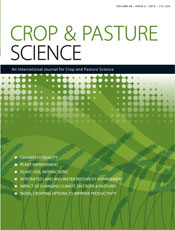CP14063Potential legume alternatives to fallow and wheat monoculture for Mediterranean environments
In a two-course rotation experiment in north-eastern Syria over 10 seasons, the highest wheat grain yields were following fallow (2.57 t ha–1), followed by medic, vetch or lentil (1.90–2.22 t ha–1), and continuous wheat (1.14 t ha–1). The wheat–vetch and wheat–lentil rotations were at least twice as profitable as wheat–fallow, and three times continuous wheat. The inclusion of grain legumes is an excellent alternative to wheat–fallow and continuous wheat production.




